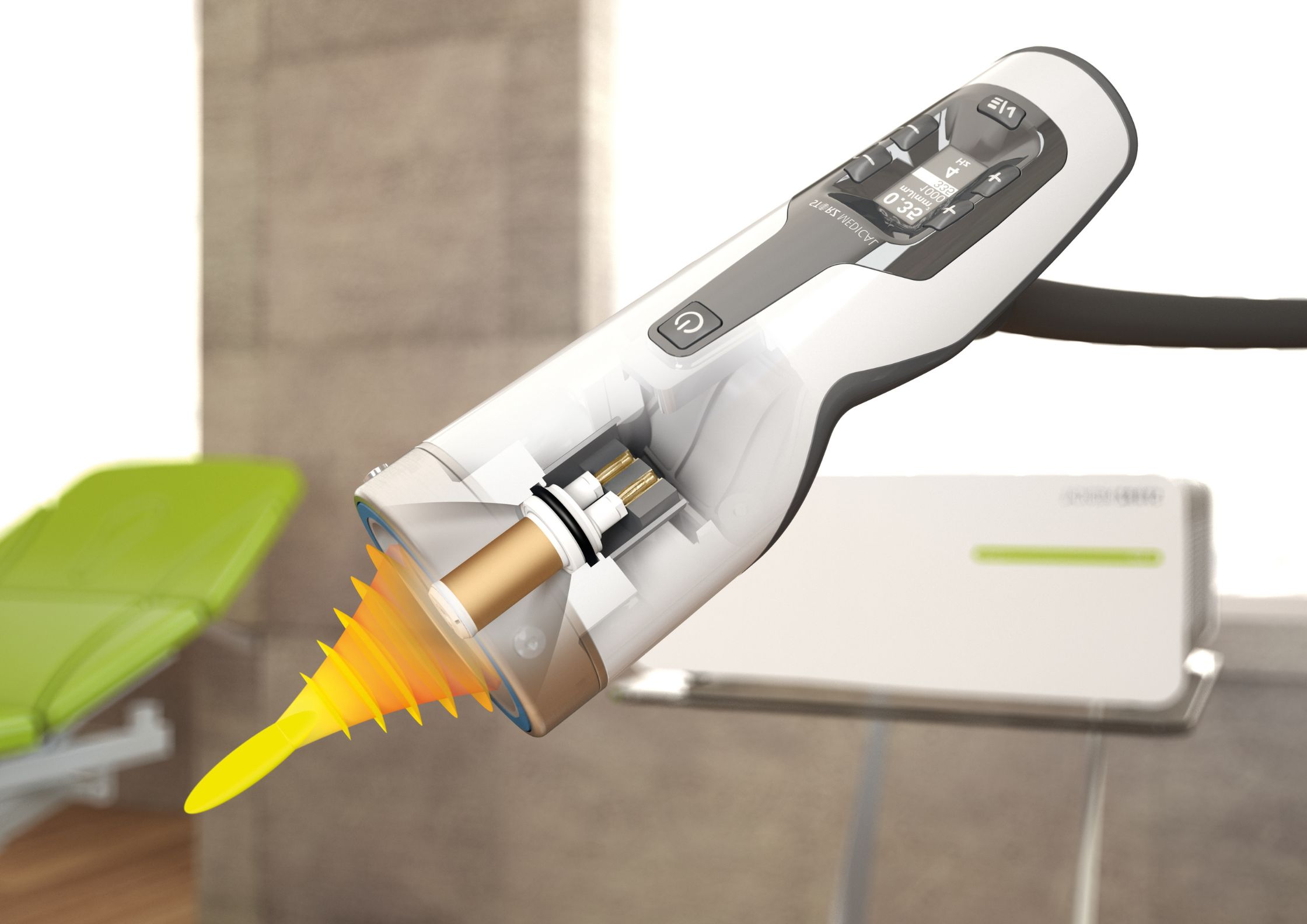In shockwave therapy, changing the frequency of a shockwave device can affect several parameters of the treatment, including the depth of penetration, energy distribution, and tissue response.
In general, a higher frequency shockwave will have a more superficial effect, while a lower frequency shockwave will penetrate deeper into the tissue. The frequency can also affect the intensity of the shockwave, with lower frequencies producing more intense shockwaves than higher frequencies, especially during radial shockwave session.
Radial shockwave therapy and focused shockwave therapy are two different types of shockwave therapy that use different types of shockwaves and frequency ranges.
Radial shockwave therapy typically uses a frequency range between 1 and 21 Hz, that is delivered in a radial pressure wave, meaning that it spreads out in all directions from the applicator. The shockwaves are generated by a compressed air mechanism. The goal of radial shockwave therapy is to treat a larger area of tissue, such as the entire circumference of a tendon, muscle, or ligament.
On the other hand, focused shockwave therapy uses a higher energy acoustic wave, that is delivered in a more focused pattern, meaning that the energy is concentrated in a specific area. Focused shockwaves are typically generated by an electromagnetic system and are used to target specific areas of tissue, such as a small area of a tendon or ligament.

Here are some specific effects of changing frequency when using shockwave devices:
Depth of penetration: As mentioned above, lower frequencies will generally penetrate deeper into the tissue, while higher frequencies will have a more superficial effect. This can be useful when targeting different types of tissue, such as bone or soft tissue.
Energy distribution: The distribution of energy within the treatment area will also change with frequency. Lower frequencies will typically have a more diffuse energy distribution, while higher frequencies will be more focused. This can affect the overall efficacy of the treatment and the size of the treatment area.
Pain sensation: Patients may experience different levels of pain depending on the frequency used. During radial shockwave, higher frequencies are well tolerated, while lower frequencies could be Uncomfortable.
Tissue response: Different tissues will respond differently to different frequencies. For example, muscle tissue may respond better to higher frequencies (usually > 12 Hz in radial devices), while bone tissue may respond better to lower frequencies.
The choice between radial and focused shockwave therapy depends on the specific condition being treated, as well as the location and size of the affected area. Your provider can help determine which type of shockwave therapy is best suited for your needs.
Learn more about shockwave therapy at our educational events.




